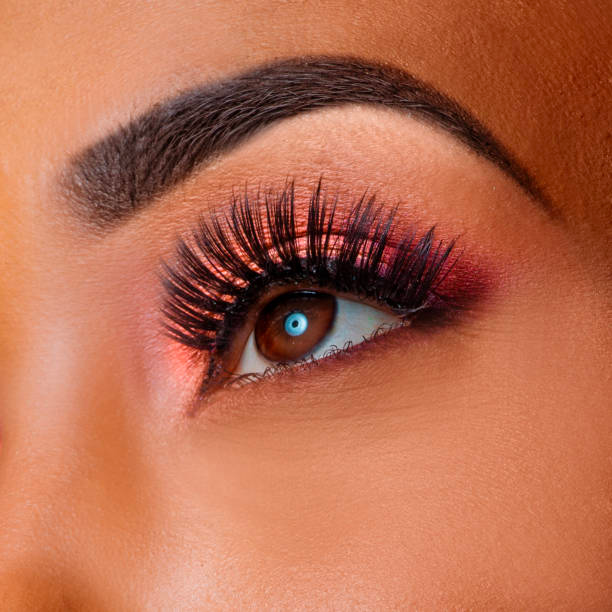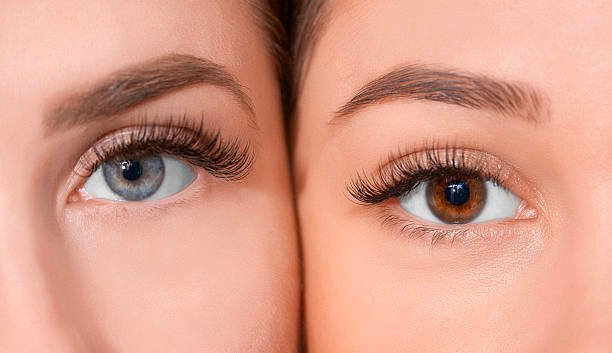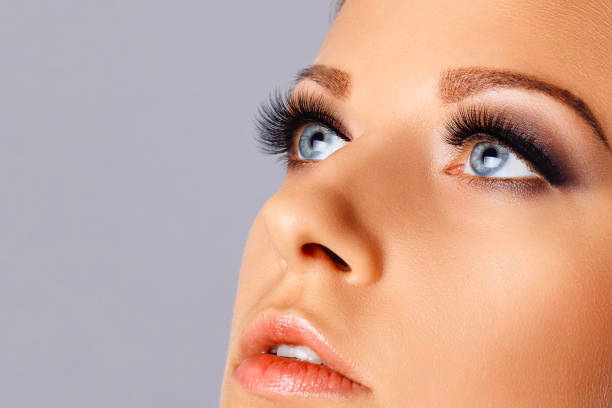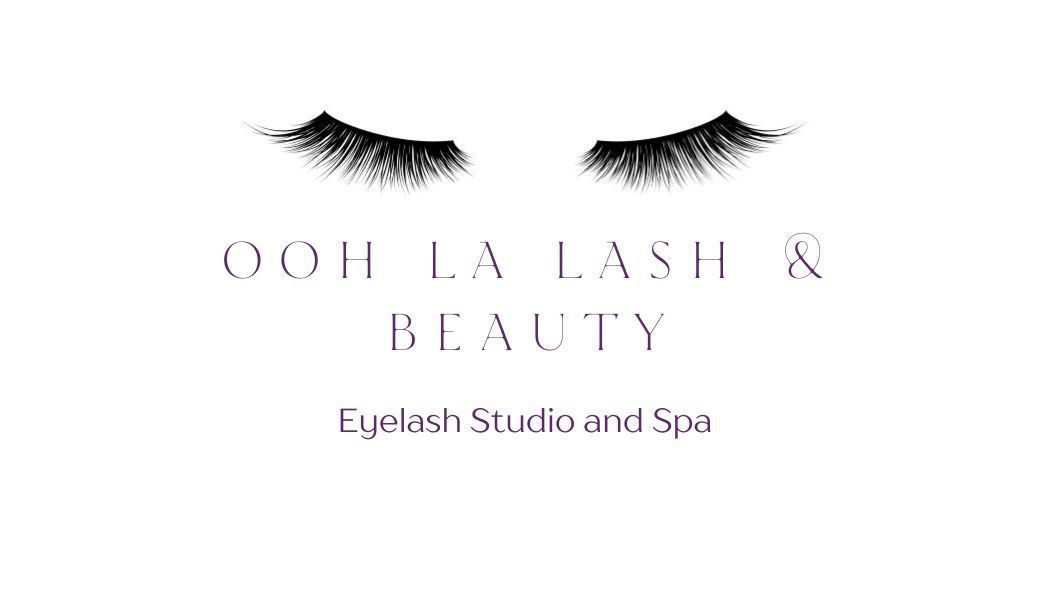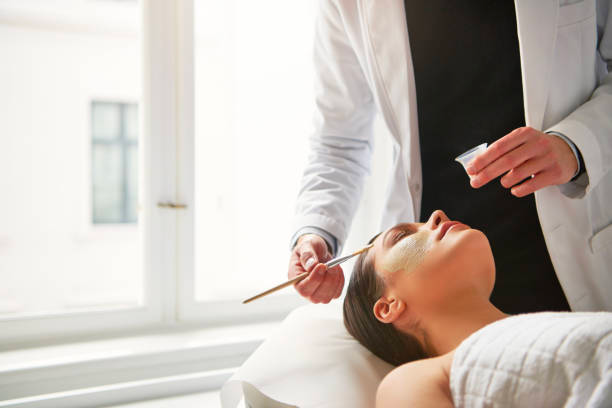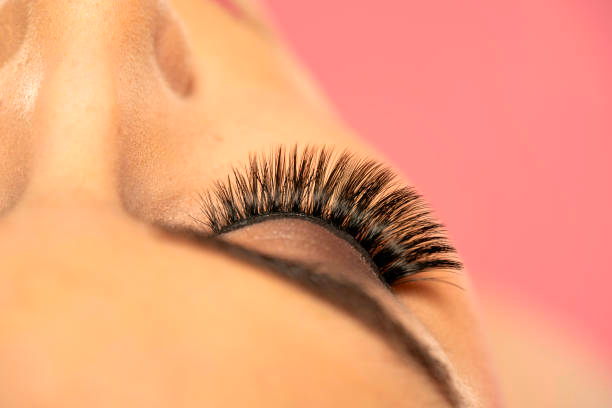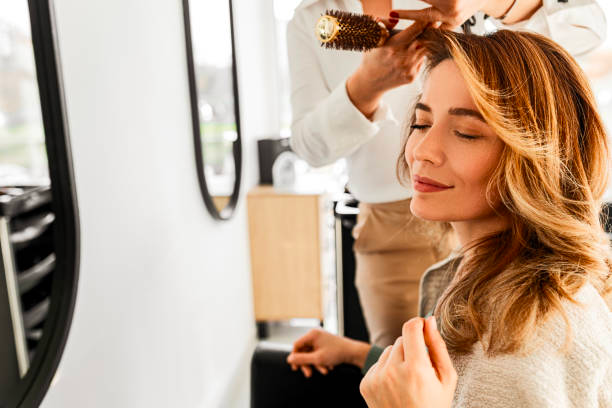Your Best Skin Health & Radiant Skincare Routines
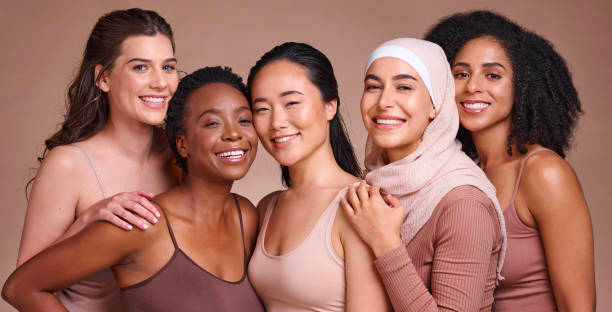
Are you wondering how to achieve that coveted healthy glow, or perhaps why your skin sometimes acts up despite your best efforts? You're not alone. The journey to skin health is deeply personal, and understanding your skincare routine is paramount. Whether you're navigating active acne or aiming to maintain clear, acne-prone skin, the right approach can make all the difference. This guide, brought to you by your trusted experts at Ooh La Lash Beauty Spa, will illuminate the path to not just beautiful skin, but skin that truly reflects your inner vitality and confidence. We'll delve into why a consistent skincare routine is crucial, how to navigate common skin concerns, and how to choose products that truly nurture your skin.
Key Takeaways from This Article:
- A consistent, tailored skincare routine is vital for managing active skin issues (like acne) and maintaining long-term skin health, significantly impacting your confidence.
- Initial breakouts or skin changes (purging) can be a normal part of starting a new, effective skincare regimen as your skin adjusts and expels impurities.
- Achieving radiant skin involves understanding your skin's needs for hydration, exfoliation, sun protection, and targeted treatments, while also being mindful of potentially harmful ingredients in conventional products.
The truth is, a dedicated facial skincare routine isn't just a luxury; it's an integral component in managing the appearance and health of your skin. This is especially true for those with acne-affected skin, where proper care can soothe active breakouts. But it’s equally important during periods of quiescence, when facial acne is well controlled, to maintain that clarity and prevent future issues in acne-prone skin. It’s a continuous journey of care that pays dividends in both appearance and well-being.
Many people understand the basics, like knowing their skin type – be it normal, dry, oily, or combination. This knowledge is fundamental because it dictates the very first step of most routines: cleansing. For instance, if you have oily skin, a gel-based cleanser is generally preferred for its ability to cut through excess sebum without over-stripping. Conversely, for dry or normal skin, a lotion-based cleanser can provide a gentler, more hydrating cleanse. While most individuals are aware of their skin type, it’s often unclear if they fully understand how to translate that knowledge into an effective, personalized routine that adapts to their skin's changing needs. At Ooh La Lash Beauty Spa, we believe in empowering you with this knowledge.
Beyond the immediate appearance, your skin is a powerful indicator of your overall well-being. Learning how skincare can reflect internal health, protect your delicate barrier from environmental toxins and sun damage, and even prevent premature signs of aging like wrinkles and sagging, is empowering. It’s about more than just products; it's about a holistic approach that considers lifestyle factors like stress management and sleep quality. After all, the better you feel on the inside, the more it radiates outwards. Consider your skin the tell-tale sign of your internal health – when it’s glowing, it’s often a reflection of balanced well-being. This article will provide you with the tips and tools for a good skincare routine and guide you on when expert advice from a dermatologist or a skilled esthetician at Ooh La Lash might be beneficial.
The Initial Skincare Hurdle: Understanding Purging vs. Irritation
Starting a new skincare routine or incorporating potent new products can sometimes lead to an unexpected outcome: your skin might temporarily seem worse. You might experience breakouts, redness, or skin flaking. This phenomenon, often called "skin purging," can be disheartening, but it's frequently a normal, short-term condition.
What is Skin Purging?
Skin purging occurs when you introduce active ingredients that accelerate skin cell turnover. Products containing retinoids (like retinol, tretinoin), Alpha Hydroxy Acids (AHAs like glycolic acid, lactic acid), Beta Hydroxy Acids (BHAs like salicylic acid), and even some exfoliants can trigger this. These ingredients work by penetrating deep into the pores to clear out congestion and speeding up the rate at which new skin cells reach the surface. As this happens, underlying oil, bacteria, dirt, and microcomedones (the very early stages of pimples) that were already brewing beneath the surface are brought up more quickly. So, those pimples that would have eventually appeared over several weeks might all come to a head in a shorter timeframe.
Think of it like a deep clean for your pores. The new product is essentially "purging" all the gunk out. This process typically lasts for one full skin cycle, which is about 4 to 6 weeks. While it can be frustrating, it’s often a sign that the product is doing its job effectively. The breakouts that occur during purging tend to appear in areas where you typically get them, and they usually resolve faster than your usual pimples.
Distinguishing Purging from Irritation or an Allergic Reaction:
It’s crucial to differentiate purging from a negative reaction like irritation or an allergy. Here's how:
- Location of Breakouts:
- Purging: Breakouts typically occur in your usual problem areas where you frequently experience pimples.
- Irritation/Allergy: Breakouts or rashes might appear in new areas where you don't normally get blemishes.
- Type of Blemish:
- Purging: Often presents as small, inflamed papules or pustules, or blackheads and whiteheads coming to the surface. They tend to heal more quickly than regular acne.
- Irritation/Allergy: Can manifest as redness, persistent itching, a burning sensation, hives, small red bumps that don't come to a head (contact dermatitis), or extreme dryness and peeling beyond what’s expected.
- Duration:
- Purging: Should subside within 4-6 weeks as your skin adjusts. If it continues beyond this, it might be something else.
- Irritation/Allergy: Will likely persist or worsen as long as you use the product.
- Recognizing Signs of Skin Irritation:
- Redness and Burning Sensation: One of the most immediate signs. This can range from mild to severe. Some products, like those with high concentrations of acids or retinoids, might cause a temporary tingling, but persistent burning is a red flag.
- Itchiness (Pruritus): If a product makes your skin intensely itchy, it’s a strong indicator of irritation or an allergic reaction.
- Dryness, Flaking, and Peeling: While some active ingredients can cause mild dryness initially, excessive flaking or peeling, especially if accompanied by discomfort, suggests the product is too harsh or you're using it too frequently.
- Swelling or Hives: These are more severe signs and indicate you should stop using the product immediately and consult a professional.
What to Do if You Suspect Purging:
- Be Patient: Give your skin time to adjust, typically 4-6 weeks.
- Introduce New Actives Slowly: Start by using the new product 2-3 times a week and gradually increase frequency as your skin tolerates it.
- Support Your Skin Barrier: Use a gentle cleanser, a soothing, non-comedogenic moisturizer, and always wear sunscreen during the day, as active ingredients can make your skin more sun-sensitive.
- Avoid Picking: This can worsen inflammation and lead to scarring.
What to Do if You Suspect Irritation:
- Stop Using the Product Immediately: Don't try to "push through" irritation.
- Soothe Your Skin: Use gentle, fragrance-free products. Ingredients like ceramides, hyaluronic acid, aloe vera, and centella asiatica can help calm inflammation.
- Patch Test New Products: In the future, always apply a small amount of a new product to a discreet area (like behind your ear or on your inner arm) for a few days to see how your skin reacts before applying it to your entire face.
External aggressors like pollution, UV rays, and harsh weather can also lead to clogged pores and irritation, resulting in breakouts. Protecting your skin with appropriate products, such as non-comedogenic moisturizers and broad-spectrum sunscreens, can help shield it from these challenges. At Ooh La Lash Beauty Spa, our estheticians can help you identify whether you're experiencing purging or irritation and adjust your skincare routine accordingly.
Unlocking Your Radiance: The Pillars of a Glowing Skin Routine
Achieving radiant, glowing skin health isn't about a single magic product; it's about understanding and consistently implementing the key components of an effective skincare routine. Radiant skin typically glows from within, characterized by smoothness, even tone, hydration, and a subtle luminosity. This isn't an overnight transformation but a result of dedicated care focusing on several core pillars.
- Hydration: The Foundation of Dewy Skin
Hydration is paramount for plump, supple, and radiant skin. Dehydrated skin often looks dull, can feel tight, and may show fine lines more prominently. - Internal Hydration: Drinking an adequate amount of water throughout the day is crucial for overall health, including skin health.
- Topical Hydration:
- Humectants: Ingredients like hyaluronic acid, glycerin, and aloe vera draw moisture from the environment (or deeper skin layers) into the epidermis.
- Emollients: Ingredients like squalane, ceramides, and fatty acids help to soften the skin and fill in any cracks in the skin barrier, improving texture.
- Occlusives: Ingredients like petrolatum, shea butter (in richer creams), and dimethicone create a physical barrier on the skin to prevent water loss (Transepidermal Water Loss - TEWL).
A good skincare routine will incorporate hydrating serums and moisturizers suited to your skin type. Even oily skin needs hydration; often, oiliness can be a sign of dehydration as the skin overcompensates by producing more sebum. - Exfoliation: The Key to a Healthy Glow
Exfoliation is a non-negotiable step in your quest for radiant skin. Our skin naturally sheds dead cells, but this process can slow down due to age, environmental factors, or skin type. A buildup of dead skin cells can leave the complexion looking dull, rough, and can clog pores. - Physical Exfoliation: Involves manually scrubbing away dead skin cells using products with fine particles (like sugar or jojoba beads) or tools (like a soft brush or cleansing cloth). Be gentle to avoid micro-tears.
- Chemical Exfoliation: Uses acids or enzymes to dissolve the bonds holding dead skin cells together.
- AHAs (Alpha Hydroxy Acids): E.g., glycolic acid, lactic acid. Water-soluble, work on the skin's surface. Good for normal to dry skin, targeting dullness and uneven texture.
- BHAs (Beta Hydroxy Acids): E.g., salicylic acid. Oil-soluble, can penetrate deeper into pores to dissolve sebum. Excellent for oily and acne-prone skin.
- PHAs (Polyhydroxy Acids): E.g., gluconolactone, lactobionic acid. Similar to AHAs but have larger molecules, so they penetrate less deeply, making them gentler and suitable for sensitive skin.
The frequency of exfoliation depends on your skin type and the strength of the product, typically 1-3 times a week. Over-exfoliation can damage the skin barrier, leading to irritation and sensitivity. - Sun Protection: Your Daily Shield
Sun damage is a leading cause of premature aging (photoaging), including wrinkles, sagging, dark spots, and uneven skin tone. More importantly, it significantly increases the risk of skin cancer. - Broad-Spectrum Protection: Choose a sunscreen that protects against both UVA (aging) and UVB (burning) rays.
- SPF 30 or Higher: This is the daily minimum recommended by dermatologists.
- Daily Application: Apply sunscreen every morning, rain or shine, even if you're indoors (UVA rays can penetrate windows). Reapply every two hours when outdoors or after sweating/swimming.
Incorporating a dedicated sunscreen, or a moisturizer with adequate SPF, is crucial for maintaining skin radiance and health long-term. - Targeted Treatments: Enhancing Luminosity
Once you have the basics of cleansing, moisturizing, and sun protection down, targeted treatments can address specific concerns and further enhance luminosity. - Antioxidant Serums (e.g., Vitamin C): Help protect against free radical damage from UV rays and pollution, brighten skin tone, and can boost collagen production.
- Retinoids: Vitamin A derivatives that accelerate cell turnover, boost collagen, reduce fine lines, improve skin texture, and help with acne. Start slowly and with lower concentrations.
- Niacinamide (Vitamin B3): A multitasking ingredient that can help with redness, pore size, oil control, skin barrier function, and hyperpigmentation.
- Peptides: Short chains of amino acids that are building blocks of proteins like collagen and elastin. Can help with firmness and elasticity.
These treatments are usually applied after cleansing and toning but before moisturizing. This multi-faceted approach, focusing on hydration, proper exfoliation, diligent sun protection, and focused treatments, forms the bedrock of radiant skin, enhancing dewiness, elasticity, and overall glow. As an obstetrician-gynecologist, cosmetic surgeon, and founding member of the American Holistic Medical Association might attest, your skin is often a window into your health, and achieving a radiant complexion requires understanding this deep connection between external beauty and overall wellness.
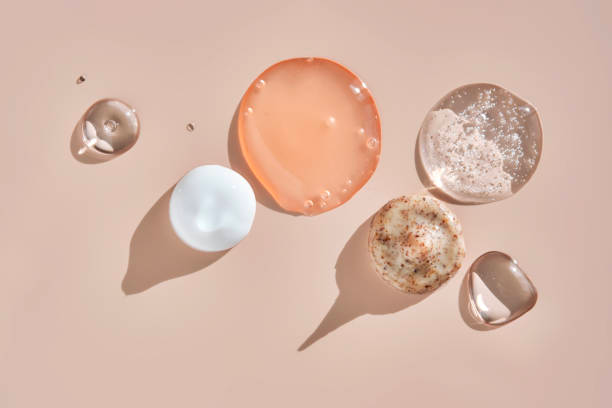
Smart Choices: Navigating Ingredients for Optimal Skin Health
In our pursuit of beautiful skin, it's easy to be swayed by attractive packaging and promising claims. However, understanding what's in your skincare products is just as important as the routine itself. Conventional beauty products can sometimes contain synthetic chemicals, parabens, sulfates, and artificial fragrances that may irritate the skin, trigger allergies, or worsen conditions such as eczema and acne, particularly for those with sensitive skin.
Potentially Harmful Ingredients to Be Aware Of:
- Parabens (e.g., methylparaben, propylparaben): Used as preservatives to prevent microbial growth. Some studies have raised concerns about their potential to disrupt hormones (endocrine disruptors) and link to skin irritation. While many regulatory bodies deem them safe in small quantities, many consumers prefer to avoid them.
- Sulfates (e.g., Sodium Lauryl Sulfate - SLS, Sodium Laureth Sulfate - SLES): Strong detergents that create a foaming lather in cleansers and shampoos. They can be very stripping, drying out the skin and hair, and potentially irritating the skin barrier, leading to redness and itchiness, especially for sensitive or dry skin types.
- Artificial Fragrances/Parfum: A common cause of skin sensitization, allergic reactions, and contact dermatitis. "Fragrance" or "parfum" on an ingredient list can hide a cocktail of dozens of unlisted chemicals. If you have sensitive skin, opt for fragrance-free products.
- Phthalates (e.g., DBP, DEHP): Often used to make plastics more flexible and can be found in fragrances to make them last longer. Like parabens, there are concerns about them being endocrine disruptors.
- Formaldehyde and Formaldehyde-Releasing Preservatives (e.g., DMDM hydantoin, quaternium-15): Used to prevent bacterial growth. Formaldehyde is a known carcinogen, and these releasers can cause allergic skin reactions and irritation.
- Certain Alcohols (e.g., SD Alcohol, Denatured Alcohol, Isopropyl Alcohol): When high on the ingredient list, these can be very drying and irritating, especially for dry or sensitive skin, as they can strip the skin's natural oils and damage the moisture barrier. (Note: Not all alcohols are bad; fatty alcohols like cetyl, stearyl, and cetearyl alcohol are emollients and can be beneficial).
- Chemical Sunscreens (Oxybenzone, Octinoxate): While effective, some individuals experience irritation or allergic reactions. There are also environmental concerns regarding their impact on coral reefs. Mineral sunscreens (zinc oxide, titanium dioxide) are often a gentler alternative.
A single application of a cosmetic product containing some of these elements at low concentrations may not pose an immediate health risk. However, the concern often lies in long-term, cumulative exposure, especially for products applied to areas like the lips and eyelids from which substances can more easily penetrate the body. The possibility of long-term effects and acute adverse side-effects like contact dermatitis and allergic reactions warrants careful consideration.
Why Natural or "Clean" Isn't Always a Guarantee (And What to Look For):
The terms "natural" and "clean" are not strictly regulated in the beauty industry. While products marketed this way often utilize gentler, plant-derived ingredients that are less likely to provoke negative reactions, it's still important to read the ingredient list. Some natural ingredients, like certain essential oils, can also be sensitizing for some individuals.
Manufacturers are legally required to ensure they're using safe amounts of chemicals in their products, but this doesn't always mean that ingredients can't affect your health, especially with repeated exposure or for individuals with specific sensitivities.
Tips for Making Smarter Choices:
- Read Ingredient Lists (INCI): Ingredients are listed in descending order of concentration. Focus on the first five to seven ingredients, as they make up the bulk of the product.
- Know Your Skin's Sensitivities: If you know certain ingredients irritate your skin, actively avoid them.
- Patch Test: Always patch test new products.
- Look for Certifications (If Important to You): Certifications like "Ecocert," "COSMOS," "Leaping Bunny" (cruelty-free), or "EWG Verified" can offer some guidance, but always do your own research.
- Consult Professionals: Your estheticians at Ooh La Lash Beauty Spa are knowledgeable about product formulations and can help guide you toward products that are both effective and suitable for your skin health goals and sensitivities.
Ultimately, the goal is to find effective products with ingredient profiles that support your skin’s health and minimize the risk of irritation or adverse reactions. It’s about being an informed consumer and prioritizing not just the aesthetics but the overall wellness of your skin.
Your Partner in Skin Health: How Ooh La Lash Elevates Your Skincare Journey
Navigating the world of skincare can feel overwhelming, but you don't have to do it alone. At Ooh La Lash Beauty Spa, we're passionate about empowering you to achieve and maintain your healthiest, most radiant skin. We understand that an effective skincare routine is more than just products; it's a personalized approach that addresses your unique skin type, concerns, and goals.
Resolving Your Skincare Concerns with Expert Guidance:
Whether you're battling persistent acne, noticing the first signs of aging, struggling with sensitivity, or simply seeking that elusive glow, our experienced estheticians are here to help.
- Personalized Skin Analysis: We begin with a thorough assessmen of your skin to understand its current condition, your concerns, and your lifestyle factors that might be impacting your skin health.
- Customized Treatment Plans: Based on your analysis, we can recommend in-spa treatments – from deep-cleansing facials and targeted peels to hydrating and rejuvenating therapies – designed to address your specific needs.
- Product Recommendations: We can help you sift through the noise and select high-quality, effective products for your at-home skincare routine. We prioritize formulations that deliver results while respecting your skin's barrier. For instance, as a final step in your nightly routine, we often recommend products rich in skin-renewing ingredients. Following expert advice, like Dr. Khetarpal's recommendation for a vitamin A-based cream (retinoid) to help build new collagen and rehydrate your skin overnight, is something we can help you incorporate safely and effectively.
- Ongoing Support and Education: Skin changes with seasons, age, and lifestyle. We provide ongoing support and adjust your routine as needed, ensuring you're always equipped with the knowledge to care for your skin effectively. We believe in explaining the "why" behind our recommendations, so you feel confident in your skincare choices.
A Memorable Journey to Confidence:
We often see clients like Sarah (name changed for privacy), who came to us frustrated with persistent breakouts and dull skin despite trying countless products. She felt her skin was holding her back, impacting her confidence. After a detailed consultation, we identified that a combination of using products too harsh for her sensitive, acne-prone skin and an inconsistent routine was exacerbating her issues. We helped her simplify her regimen, introduced gentle yet effective products, and incorporated regular soothing and clarifying facials. Within a few months, Sarah's skin transformed. The breakouts subsided, her complexion brightened, and most importantly, her confidence soared. She often tells us, "I finally feel comfortable and radiant in my own skin, and it’s thanks to the guidance I received here. It's one of the skincare secrets I'm glad Ooh La Lash shared!" This is the kind of transformation we strive for with every client.
Your journey to radiant skin health is a partnership. At Ooh La Lash Beauty Spa, we're committed to providing you with the expertise, treatments, and support you need to unmask your most confident self. Let us help you build a skincare routine that not only addresses your concerns but also becomes a cherished ritual of self-care.
Book your personalized skin consultation with Ooh La Lash Beauty Spa today and let's embark on your journey to radiant, healthy skin together!
